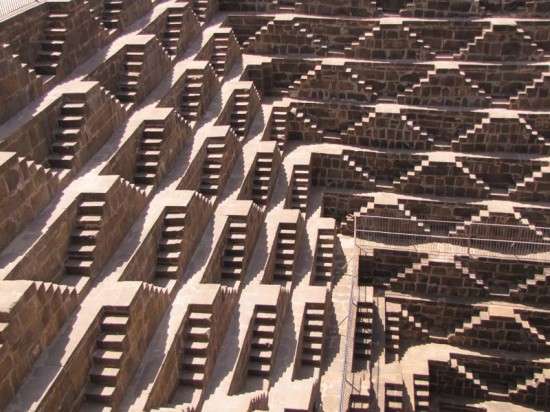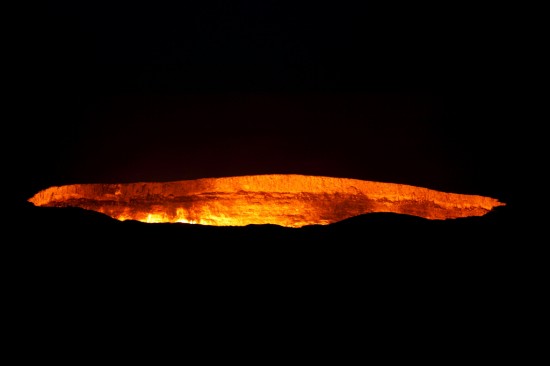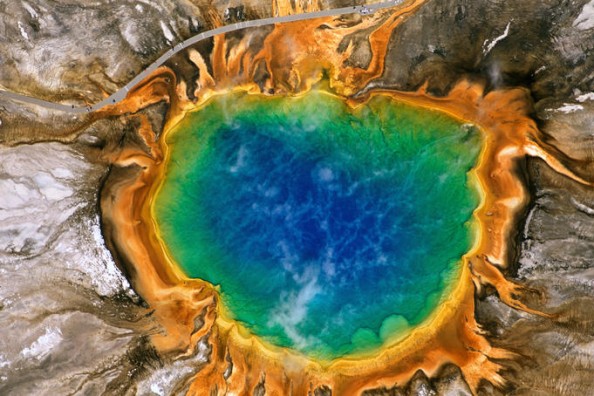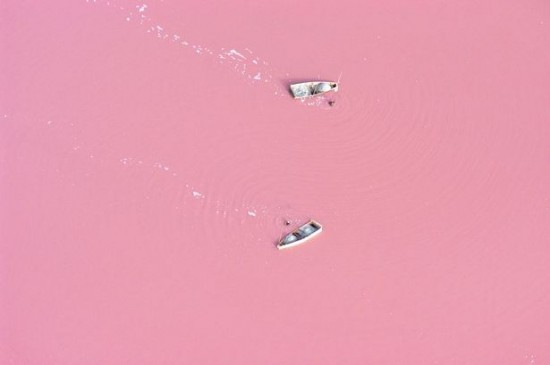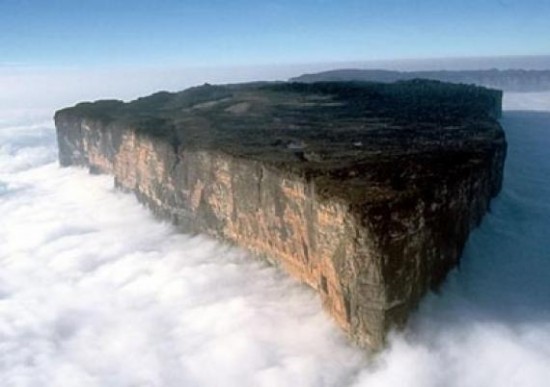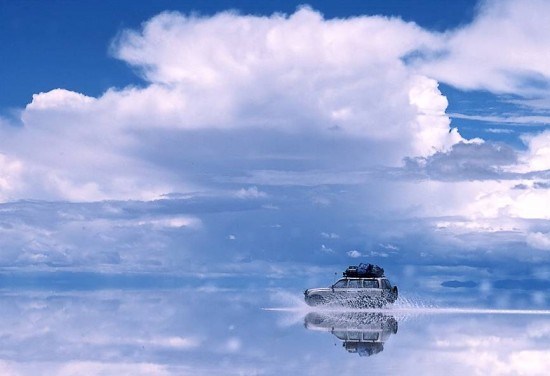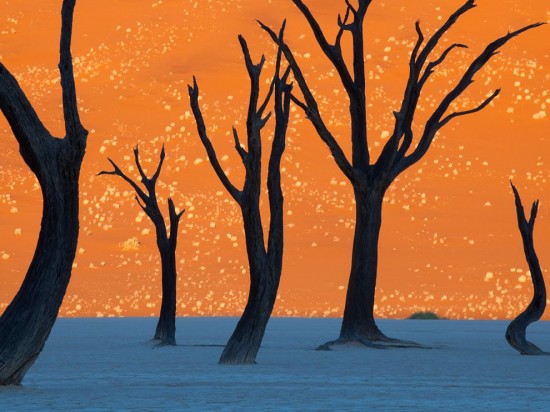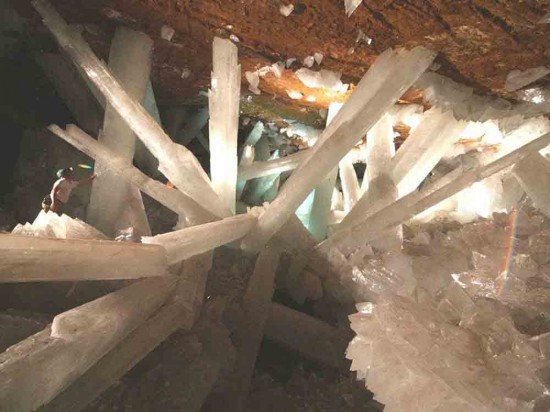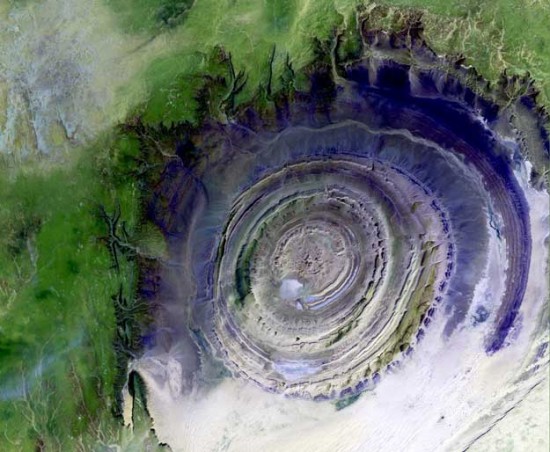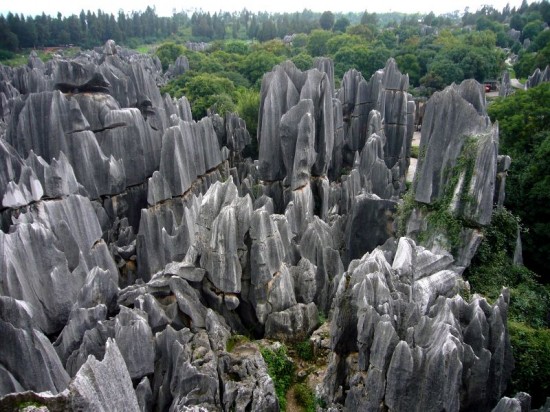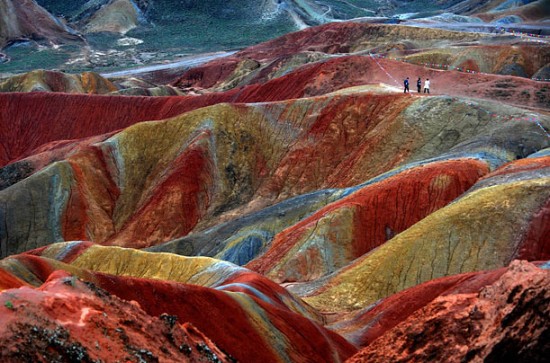Sometimes, places that can be found on planet earth seem more surreal and obscure than anything a Fantasy or science fiction author and artist can come up with.
Chand Baori
A famous stepwell situated in the village of Abhaneri near Jaipur in India, it is located opposite Harshat Mata Temple, constructed in 800 c. and is one of the deepest and largest step wells in India. It was built in the 9th century and has 3500 narrow steps in 13 stories and is 100 feet deep.
Door to Hell, Derweze, Turkmenistan
A wonderful story of how man doesn’t always know how to contain nature, and maybe it shouldn’t. While drilling in 1971, Soviet geologists tapped into a cavern filled with natural gas. The ground beneath the drilling rig collapsed, leaving a large hole with a diameter of 70 metres (230 ft). To avoid poisonous gas discharge, it was decided the best solution was burn it off. Geologists had hoped the fire would use all the fuel in a matter of days, but the gas is still burning today. Locals have dubbed the cavern “The Door to Hell”.
Grand Prismatic Spring, Yellowstone
The largest hot spring in the United States, and the third largest in the world, after Frying Pan Lake in New Zealand and Boiling Lake in Dominica. It’s for its striking coloration. Its colors include blue, green, yellow, orange, red and brown, and recall the rainbow dispersion of white light by an optical prism.
Lake Retba, Senegal
The pink lake in Senegal gets its name from it’s color and its color from Dunaliella salina, a type of halophile green micro-algae especially found in sea salt fields. The lake is also known for ts high salt content, close to 40%, allowing people to float easily on top of it.
Mount Roraima, Venezuela
The tabletop mountain, located at the triple border point of Venezuela, Brazil and Guyana, considered some of the oldest geological formations on Earth, dating back to some two billion years ago in the Precambrian. It’s surrounded on all sides by 400-metre-tall cliffs.
Salar de Uyuni
The Salar is the world’s largest salt flat, located in Bolivia. The Salar was formed as a result of transformations between several prehistoric lakes. It is covered by a few meters of salt crust, which has an extraordinary flatness with the average altitude variations within one meter over the entire area of the Salar. The crust serves as a source of salt and covers a pool of brine, which is exceptionally rich in lithium. It contains 50 to 70% of the world’s lithium reserves, which is in the process of being extracted. The large area, clear skies and the exceptional flatness of the surface make the Salar an ideal object for calibrating the altimeters of Earth observation satellites.
Namibia “Forests”
A bunch of camel thorn trees in Namibia, with a setting that actually looks like it could take place on Mars in some John Carter novel.
Naica Mine, Chihuahua, Mexico
A working mine in northern Mexico, known or its extraordinary selenite crystals, some reaching 4 feet (1.2 m) in diameter and 50 feet (15 m) long. The Cave of Crystals (Cueva de los Cristales) is a cave approximately 1,000 feet (300 m) below the surface in the limestone host rock of the mine. The chamber contains giant selenite crystals, some of the largest natural crystals ever found.
Richat Structure, Mauritania
Known as the Eye of the Sahara, the Richat structure is a deeply eroded, slightly elliptical, 40-km in diameter, dome. Differential erosion of resistant layers of quartzite has created high-relief circular cuestas.
Stone Forest, Yunnan, China
A UNESCO world heritage site, described as unrivalled in terms of the diversity of its karst features and landscapes.
Zhangye, China
Known for the Danxia landform, that is a unique type of petrographic geomorphology. Danxia landform is formed from red-colored sandstones and conglomerates of largely Cretaceous age.

